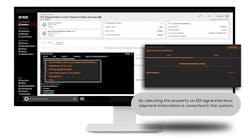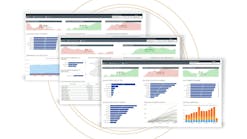The U.S. Patent and Trademark Office recently granted a patent to Bendix Commercial Vehicle Systems for a “Wireless PLC Attack Mitigation” device that is designed to help detect and prevent cyberintrusions in tractor-trailers.
Inventors listed on the patent, granted Feb. 28, are Thomas J. Hayes, Bendix product owner in brake redundancy, and Ben Gardiner, a senior cybersecurity research engineer with the National Motor Freight Traffic Association (NMFTA). According to the patent abstract, the device detects nefarious communication signals in a vehicle using a combination of detection support logic, nefarious logic, a filtering circuit, and a microcontroller.
“The NMFTA cybersecurity program has the mission to make things better, to improve cybersecurity for our fleets,” Gardiner said in a news release. “We were able to show that these attacks are possible, and we did this in various forms, including videos and so forth. There’s only so much we can do on the bench, so we needed assistance from people who owned equipment.”
For the trucking industry, the technology promises to deliver more secure operating systems and fewer operational disruptions and added costs, Bendix said. Once incoming communication signals are determined nefarious, “The device transmits a blocking signal to the nefarious logic to filter a frequency band of a communication conductor of the wiring harness in response to the determination that the characteristic measured during the first time differs from the characteristic measured during the second time,” according to the abstract.
The patent number is US-11595821-B2. Bendix first applied for the patent in February 2021.
NMFTA-member trucking companies participated in the trailer cybersecurity research project, the association said, using their equipment to help developers test and apply the cyberintrusion technology. NMFTA participated because it believes “in the need for a healthy mix of public-domain technologies, which are free to everyone, and those that offer the promise of greater return on the research and development investment.”
“We hope this strikes a balance between technologies that can be reused by everyone—such as the attack mitigations, which the NMFTA published into the public domain—and those that can be incentivized,” Gardiner concluded.










